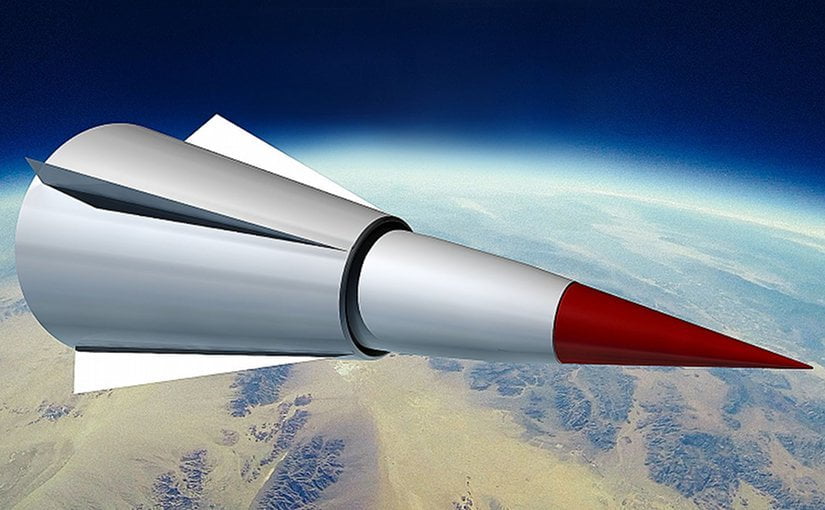By Robbin Laird
On August 23, 2018, the Williams Foundation in Canberra, Australia held its latest seminar on military modernization. This seminar focused on the evolution of joint strike and the importance for Australia to develop an independent deterrent.
One of the key elements of discussion was the evolving nature of missile modernization and the evolution of strike systems in a contested strategic environment.
Three presentations in particular focused directly on this topic. The first was by Group Captain Jason Begley, Director Joint Effects, Headquarters Joint Operations Command. The second was by Dr. Tom Bussing, Vice President, Advanced Missile Systems, Raytheon Missile Systems. And the third was by James Heading, Lockheed Martin.

The presentation by Group Captain Begley focused on the evolution of strike to encompass various non-lethal capabilities, such as electronic and cyber warfare.
He included information operations as well within the notion of broad-spectrum strike. His presentation highlighted that long-range strike need not simply be about weapons on target at longer range, but includes an ability to influence adversary behavior at home or at key choke points in the operational military capabilities of the adversary.
But the role of strike within deterrence cannot be an abstract subject; it needs to be focused on the particular adversary and what will influence that adversary most effectively from a deterrent or crisis management perspective.
Begley’s presentation raised some key questions which clearly need to be considered as one shapes new longer-range strike capabilities.
With regard to an authoritarian adversary, what really deters them?
How might we build in effect a SIOP dealing with specific authoritarian regimes?
And even though we have subsumed the strategic shift as a return of Great Power competition, the democracies are competing with various authoritarian regimes which have many dissimilarities, although their common interest is to make the world safe for authoritarian regimes.
But we cannot have one size fits all notion of what deters a specific authoritarian regime which means that shaping the strike portfolio and profile needs to be calibrated against our judgements about what deters a specific set of authoritarian leaders.

The presentation by Dr. Bussing specifically focused on the evolving strike capabilities of the authoritarian regimes in question. These capabilities were described as combing Anti-Access/Area Denial approaches with extended reach and range of weapons, with increased investments in working the problem of developing higher speed weapons as well.
With regard to the Chinese, the progress of the past decade has been significant in the weapons area and they have been leveraging their capabilities at an accelerated pace.
And with their entrance into the South China Sea have pushed their strike capabilities further forward into the Pacific providing greater reach and range for their strike capabilities.
The Russians under President Putin have prioritized missile development, notably because they have a large inventory of aging platforms, the weapons modernization piece provides enhanced capabilities beyond what their platforms can deliver.
And their efforts have been multi-domain, meaning that they have worked missile modernization on land, sea and air and have worked where possible leveraging approaches to shape common missiles which can be deployed on a variety of platforms.
With both the Russians and Chinese emphasizing weapons modernization as a core capability, dealing with longer range and faster weapons is becoming a core challenge to the US and the allies.
Dr. Bussing highlighted a number of key areas where US and allied investments were going or needed to go to deal with the evolving strategic threats.
First, there was a clear need to focus on hypersonics and counter hypersonic weapons.
Second, to get an advancement in the numbers of air breathing systems to provide for weapons delivery, unmanned systems were a key compliment to piloted aircraft.
Third, the undersea warfare domain is a key focus of attention within which there is a need to expand capabilities to generate solutions across the kill chain in denied environments.
Finally, with regard to weapons development, the speaker argued for the development and building of multiple weapons options in the future battlespace.
This presentation raised a number of key questions with regard to the broader strategic way ahead with regard to missile development.
How might the US and allies come up with a better division of labor in building out missile capabilities?
With the coming of the F-35, there is a clear opportunity for a significant diversification of effort, as already seen with the Kongsberg JSM missile which is now available to the F-35 global enterprise, without the US needing to invest in this capability.
What role will directed energy weapons play in the evolution of the weapons portfolio and profile going forward?
As directed energy weapons emerge to provide for specific tasks and functions, investments can be redirected for other weapons capabilities in the portfolio.
Clearly, a key advantage of directed energy weapons is the low cost of the weapons magazine which could have a major impact on the overall approach to building and funding a weapons stockpile.
What path might Australia take to shape their own development and production capabilities and who might be their partner in such an effort, notably as the Australian defense industrial model is changing to incorporate the need for co-development, cross-national technology transfer and enhanced sovereignty?

Finally, James Heading focused specifically on the long-range strike issue and options for further development in this capability area. He identified various vectors on which long range strike is development, namely, speed, range, timeframe, and altitude.
The vectors as defined provided a way to describe the evolving threat, namely speed is increasing, the timeframe to respond is decreasing, the altitude is higher and the energy being delivered on target is greater given the impact of speed and trajectory.
He argued that “We are on the cusp of a revolution in long range strike driven largely by the proliferation of hypersonic weapons throughout our region.”
He underscored that we will need a number of key elements to shape an effective strategy to stay ahead of the evolving long-range strike threat, namely,
- Cohesive, well-planned, joint doctrine and tactics,
- Knowledgeable people,
- Mature Partnerships,
- Information/Intelligence,
- Training in use of new capabilities.
- Considered Investment in:
- Research and Development
- Demonstrable Capabilities
In short, we are in the throes of a weapons revolution. Our priority focus on the land wars has meant that we have emphasized short range and low collateral weapons. This focus is really not relevant to the weapons revolution which we are now facing.
As Brian Morra, a former US Air Force officer and retired senior aerospace and defense executive, wrote in a letter published by The New York Timeson August 12, 2018:
In response to the article War Without End by C.J. Shivers in the August 12, 2018 NYT Sunday magazine:
“This moving piece describes the war in Afghanistan at the grunt level and takes aim at senior officers for failures in Iraq and Afghanistan. In fact, both our national political leadership and senior military officials have failed to craft an overarching strategy and set of strategic goals and objectives commensurate with the valor and perseverance of our men and women in uniform (and in the intelligence community) who have borne the fight for all of these years. This failure has cost us many lives and much treasure.
“Less visibly, it also has come with a great opportunity cost. To wit, I have heard senior Pentagon leaders complain that while the United States and its allies have been “playing kids’ soccer” in Iraq and Afghanistan, China and Russia have been preparing for 21st century conflict by investing in cyber, space capabilities, advanced computing, and artificial intelligence.”
There is no force structure area where the opportunity cost has been greater than in terms of weapons development.
See our following studies of the evolving context for weapons development embedded in the fifth generation revolution:
The graphic is a notional concept graphic of a Chinese WU-14 HGV (now DF-ZF) missile. By Daniel Toschläger, Wikipedia Commons.


